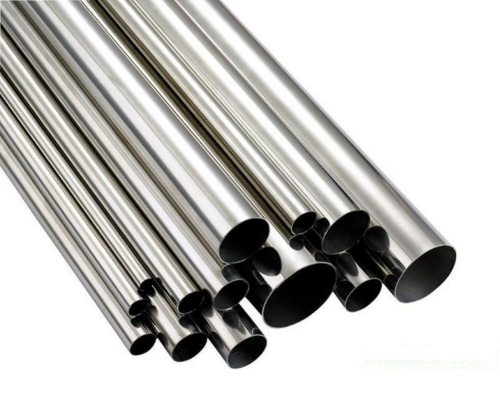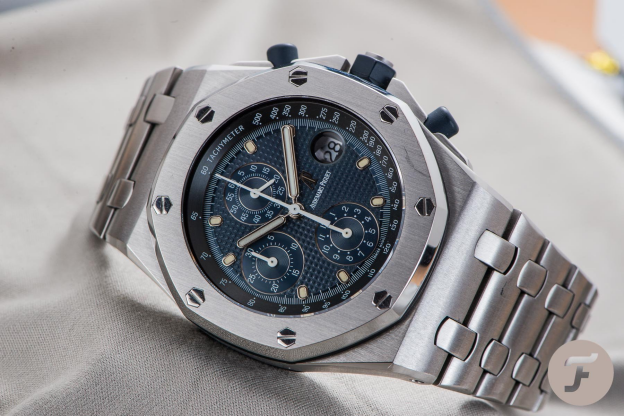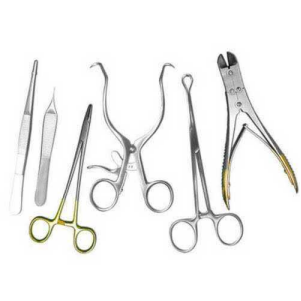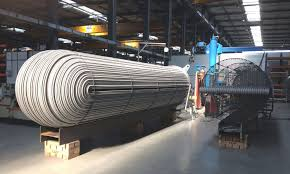Stainless Steel 316L vs 904L: Choosing the Right Material
 Jun 11,2024
Jun 11,2024

Stainless steel grades 316L and 904L both are widely used in industry due to their general properties like cost-effective and corrosion resistance. Specifically, 904L is best to use in harsh environments because of its resistance to acid. While 316L is used in chlorine environments. In this article, you will get help to choose the right material between 316L and 904L by understanding the difference between 316L and 904L compositions, properties, and applications
Definition and Types of 316L Stainless Steel
UNS S31603 also known as austenitic stainless steel contains low carbon content. AISI 316 L is composed of chromium (16-18%), molybdenum (2-3%), and nickel (10-12%). The ability of 316L to provide corrosion resistance against chlorine environment and sulfuric acid type of reducing acids is due to the presence of molybdenum. Due to low carbon content, UNS S31603 is softer and ductile making 316L machining easy compared to the other stainless-steel grades.
Different types of AISI 316 L are listed below:
- 316L Annealed
- 316L Electro-Polished
- 316L Dual Certified
- 316L Cold Rolled
- 316L Hot Rolled

316SS rods.
Definition and Types of 904L Stainless Steel
Austenitic stainless steel with a high alloying element is known as 904L. It has high corrosion resistance to harsh and severe corrosive environments. Other names of 904L include:
- UNS N08904
- ISO 904L
- EN 1.4539
- AISI 904L
- SUS 904L
- SS2562

904L stainless steel watch.
YouTube video explaining the battle between 316L vs 904L.
https://www.youtube.com/watch?v=38YvmNSC04o&pp=ygULMzE2IHZzIDkwNGw%3D
Applications and Parts of 316L and 904L Stainless Steel
316L also known as austenitic stainless steel has high corrosion resistance in a chlorine environment. 316 is biocompatible and has cleaning and sterility ability. 316L also has efficient heat transfer and is durable that's why used in vast applications listed below.
316L Stainless Steel Parts are used in applications like:
- Marine Hardware
- Chemical processing equipment components
- Medical implants
- Pharmaceutical equipment
- Heat exchangers
- Valve and pump parts
- Springs
904 L has good corrosion resistance in harsh environments, especially acids that's why also used in cooling systems and heat exchanges in Marin. All these properties make 904 L suitable for applications listed below.

316L medical equipment.
904L Stainless Steel Parts are used in applications like.
- Oil and gas industry equipment
- Pulp and paper processing equipment
- Seawater cooling devices
- Wiring in electrostatic precipitators
- Chemical containers
- Gas washing systems
- Heat exchangers

904L heat exchanger tube.
Advantages and Disadvantages of 316L and 904L Stainless Steel
The pros and cons of UNS S31603 and UNS N08904 are explained below:
ADVANTAGES OF AISI 316 L:
- 316L is used in a wide range of applications.
- Excellent corrosion resistance against chloride-rich environments like marine.
- 316L is less expensive than 904L due to less alloying content.
- Easy weldabilities compare to 904L.
- High tensile strength and yield strength. less chances of stress corrosion cracking.
DISADVANTAGES OF AISI 316 L:
- less corrosion resistance compared to 904L in an acidic medium.
- compared to 904 L has low toughness.
- Cannot withstand high temperatures.
ADVANTAGES OF AISI 904 L:
- Excellent corrosion resistance for reducing acids like sulfuric acid and phosphoric acid.
- Suitable for sensitive applications because of nonmagnetic behavior.
- High-temperature resistance.
DISADVANTAGES OF AISI 904 L:
- High cost
- Poor weldability and machining.
YouTube video explaining the difference between 316L ROLEX and 904L ROLEX handwatch.
https://www.youtube.com/watch?v=_zKbsF1EbFY&pp=ygUWMzE2IHZzIDkwNGwgYXBwbGljdGlvbg%3D%3D
Chemical Composition
The chemical composition of AISI 316 L and AISI 904L are given below:
|
Element |
AISI 316L Stainless Steel (%) |
AISI 904L Stainless Steel (%) |
|
Iron (Fe) |
Balance |
Balance |
|
Chromium (Cr) |
16.0 - 18.0 |
19.0 - 23.0 |
|
Nickel (Ni) |
10.0 - 14.0 |
23.0 - 28.0 |
|
Molybdenum (Mo) |
2.0 - 3.0 |
4.0 - 5.0 |
|
Copper (Cu) |
- |
1.0 - 2.0 |
|
Carbon (C) |
≤ 0.03 |
≤ 0.02 |
|
Manganese (Mn) |
≤ 2.00 |
≤ 2.00 |
|
Silicon (Si) |
≤ 1.00 |
≤ 1.00 |
|
Phosphorus (P) |
≤ 0.045 |
≤ 0.045 |
|
Sulfur (S) |
≤ 0.03 |
≤ 0.035 |
|
Nitrogen (N) |
≤ 0.10 |
≤ 0.10 |
Corrosion Resistance
Although both ISO 316L and ISO 904L perform well in corrosive environments, 904L provides high resistance to corrosion at high chlorine environments.316L is highly recommended for corrosion resistance applications but for general purposes. 904L is used for specific and severe conditions like heat exchangers.316L is more prone to stress corrosion cracking compared to 904L when tensile load is applied in harsh environments.
Physical Properties
The numerical comparison between 316L and 904L stainless steel is given below in table.
|
Property |
316L Stainless Steel |
904L Stainless Steel |
|
Density |
7.99 g/cm³ |
8.00 g/cm³ |
|
Melting Point |
1371-1400°C (2500-2552°F) |
1350-1400°C (2462-2552°F) |
|
Magnetism |
Non-magnetic in the annealed state |
Non-magnetic |
|
Thermal Conductivity |
16.0 W/m·K (at 100°C) |
12.6 W/m·K (at 100°C) |
|
Coefficient of Thermal Expansion |
16.0 µm/m·K (0-100°C) |
15.0 µm/m·K (0-100°C) |
|
Electrical Resistivity |
0.074 x 10^-6 Ω·m |
0.085 x 10^-6 Ω·m |
|
Specific Heat |
500 J/kg·K |
450 J/kg·K |
Mechanical Properties
Mechanical properties of stainless-steel grade decide their application suitability under specific conditions. Stainless steel grades ISO 316L and ISO 904L mechanical properties are discussed below:
Hardness
The Stainless-steel grades ISO 316L and ISO 904L Brinell hardness, Vickers hardness, and Rockwell hardness are given below in table.
|
Property |
316L Stainless Steel |
904L Stainless Steel |
|
Brinell Hardness |
146 - 217 HB |
170 - 220 HB |
|
Vickers Hardness |
152 - 209 HV |
180 - 230 HV |
|
Rockwell Hardness |
B79 - B95 |
B85 - B96 |
Strength
316L and 904L strength is given below in the table:
|
Property |
316L Stainless Steel |
904L Stainless Steel |
|
Tensile Strength |
485 - 620 MPa |
490 - 690 MPa |
|
Yield Strength |
170 - 310 MPa |
220 - 450 MPa |
|
Elastic Modulus |
193 GPa |
200 GPa |
Weldability and Machining Capabilities
In Stainless steel grades ISO 316L and ISO 904L, 316L is ductile and can be welded and machined easily compared to 904L. 904L has alloy elements that make it hard to weld and machine compared to 316L.
Surface Treatments and Finishing
Surface treatments like polishing, electro-polishing, and passivation are done on the surfaces of 316L and 904L stainless steel grade. 904L shows a better surface finish compared to 316L.
Heat Treatment
Stainless steel grades ISO 316L and ISO 904L both can be annealed to remove internal stresses and to improve ductility. 316L can be annealed at 1010 - 1120°C while 904L can be annealed at 1095 - 1175°C.
Summarize Differences Between 316L and 904L Stainless Steel
The difference between UNS S31603 and UNS N08904 is explained in the chart below.
|
Property |
316L Stainless Steel |
904L Stainless Steel |
|
Composition |
Iron, chromium (16-18%), nickel (10-14%), molybdenum (2-3%) |
Iron, chromium (19-23%), nickel (23-28%), molybdenum (4-5%), copper (1-2%) |
|
Corrosion Resistance |
Good corrosion resistance, particularly against chlorides and reducing acids |
Excellent corrosion resistance, particularly against localized attacks by chlorides and reducing acids like sulfuric acid |
|
Cost |
Less expensive |
More expensive due to higher alloy content |
|
Weldability |
More weldable |
Less weldable due to higher alloy content |
|
Applications |
Food processing equipment, chemical tanks, marine environments |
Piping systems, pollution control equipment, heat exchangers, oil and gas industry, chemical processing |
|
Hardness |
Rockwell hardness below 95 |
Rockwell hardness below 95 |
|
Density |
7.99 g/cm³ |
8.00 g/cm³ |
|
Melting Point |
1371-1400°C (2500-2552°F) |
1350-1400°C (2462-2552°F) |
|
Magnetism |
Non-magnetic in the annealed state |
Non-magnetic |
Which is Better in CNC Machining Service
904L is expensive and difficult to machine because is harder compared to 306L. 306L is ductile, that's why offers less tool wear, ease of machining, and is cost-effective.
 Tel/WeChat:
Tel/WeChat:  Email:
Email: 
 Home
Home
 18/10 vs 304 Stainless Steel: Which Triumphs?
18/10 vs 304 Stainless Steel: Which Triumphs? 







